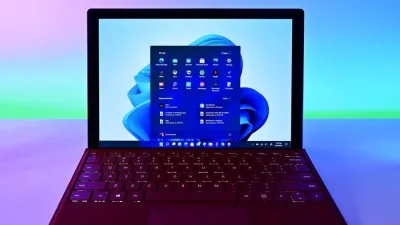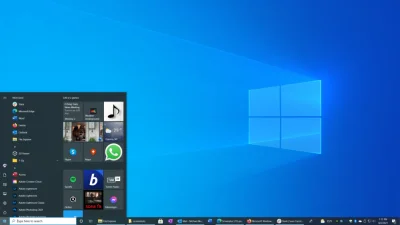PULLING ALL STOPS: Chief Executive Satya Nadella said Microsoft has bigger hopes, higher aspirations for Windows.
By Matt Day
Microsoft upped its bid to capture the hearts and minds of technology consumers with Windows 10, announcing everything from free upgrades for the majority of Windows users to support for nascent holographic display technology.
Last week, the company’s executives also showed off an interface for its operating system that they hope will bridge the gulf separating laptops, tablets and smartphones and will allow Microsoft to expand beyond dependence on the PC market.
At a daylong event on Microsoft’s Redmond campus, outside Seattle, chief executive Satya Nadella summed up his goals for Microsoft’s most famous product in terms that would surprise people used to thinking about Windows as a utility akin to a computer’s plumbing.
“We have bigger hopes, higher aspirations for Windows,” Nadella said. “We want to move from people needing Windows to choosing Windows, to loving Windows. That is our bold goal.”
Love wasn’t a term often associated with Windows 8, the last major release of the operating system. Windows 8 was widely panned by users confused by its jarring transition between a new touch-optimised interface and the traditional, familiar Windows desktop.
Microsoft started its public road to redemption in San Francisco in September with the announcement of Windows 10 and the release of a preview of the software. At that event, operating systems chief Terry Myerson and user experience leader Joe Belfiore made their pitch largely to business customers.
Last week’s gathering of journalists and analysts, featuring hours of presentations and demonstrations, was billed by Microsoft as an effort to show individual computer users what they can expect when the software is released at date to be announced later this year.
“Undoing some of the damage around Windows 8 is probably the immediate goal” with Windows 10, said J P Gownder, an analyst with Forrester Research. “But you also want to make sure people don’t defect to Chromebooks or Macs. (Microsoft) needs to solidify the ecosystem, and make sure that Windows 7 isn’t the last Windows machine people have.”
Windows 7 powers 56% of personal computers, according to data from web analytics firm Net Applications. Windows 8 and its Windows 8.1 update together account for 15%.
Microsoft said it will offer free upgrades to Windows 10 to hook both sets of users. For the first year after the launch of Windows 10, Microsoft will offer users of Windows 8.1, Windows Phone 8.1, and Windows 7 free upgrades to the new operating system, Myerson said.
For those not enticed by free software alone, Microsoft has loaded Windows 10 with bells and whistles.
The operating system will feature a new web browser, code-named “Spartan,” that allows users to freeze and share web pages. Cortana, the search assistant released for Windows Phone last year, will be embedded in Windows 10, allowing users to use voice commands to find files, write e-mails, and other tasks.
Microsoft also unveiled a wildcard: support for interaction with holographic objects. Microsoft announced its HoloLens headset — a wireless, see-through display that projects holograms into the world around its user. “It sounds like they’re pulling all the stops to make this a successful Windows release,” said Al Hilwa, an analyst with researcher IDC. “When Nadella said explicitly that they want to be loved, that’s sort of a deliberate new Microsoft strategy to connect with users.”
The coming test, Hilwa said, is whether the software is able to help Microsoft make up ground in smartphones and tablets, where the company badly lags rivals Google and Apple.
Windows-powered smartphones and tablets have a single-digit share of the global market, in part because of a dearth of applications compared to the other main operating systems. Developers don’t see much of a need to spend the hours coding applications for Windows Phone or the Windows store after already releasing versions for Google’s Android or Apple’s iOS.
Microsoft brass hope Windows 10 will make it easier for developers to write applications that can be relatively painlessly re-purposed for the operating system’s smartphone, laptop, and tablet variants.
“The big deal here is making sure that interface works well between tablets and phone,” Hilwa said. “Because mobile developers have a hard time supporting even two operating systems.” — The Seattle Times/TNS



